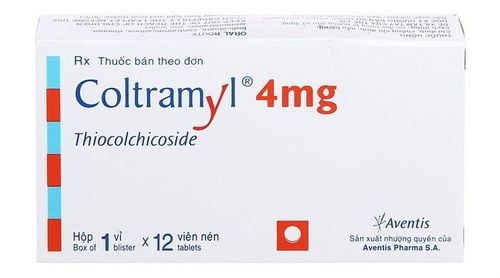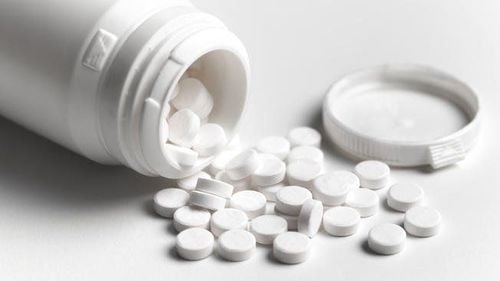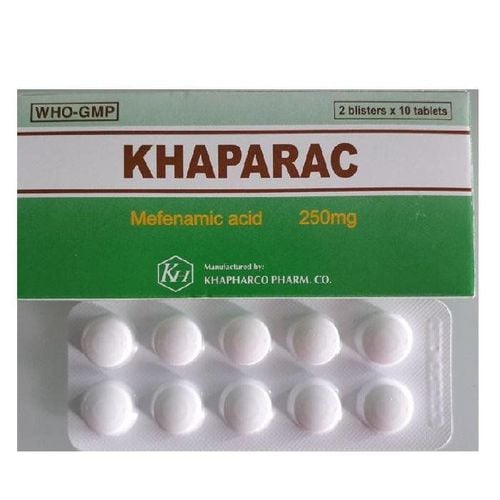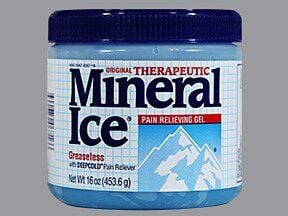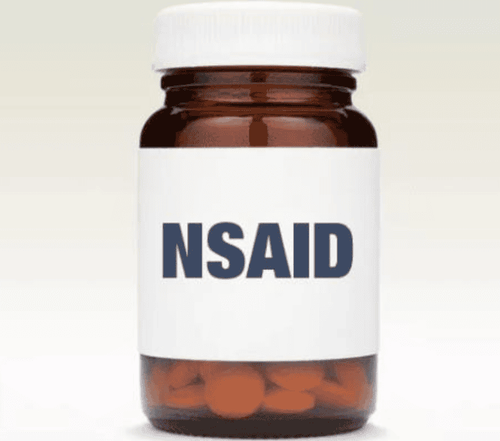This is an automatically translated article.
Debora is a drug used to relieve moderate to severe pain, the drug has a combination of Paracetamol content 325mg and Tramadol HCl content 37.5mg. The drug is packaged in a box of 3 blisters, each blister of 10 hard capsules, the manufacturer, registered as SPM Joint Stock Company. Patients should only use Debora for a short time because the drug can be toxic and potentially addictive.
1. What disease does Debora treat?
Debora drug works to relieve moderate to severe pain, the drug composition is a combination of 2 active ingredients: Paracetamol and Tramadol HCl.
Paracetamol (N-acetyl-p-aminophenol) belongs to the group of pain relievers, antipyretics, non-steroidal anti-inflammatory drugs. The drug is a biologically active metabolite of Phenacetin, effective analgesic and antipyretic that can replace Aspirin. However, unlike aspirin, it is not effective in treating inflammation and is not used to prevent platelet aggregation. Tramadol HCl is an opioid pain reliever. At least two mechanisms of binding of the parent compound of Tramadol and its active metabolite (M1) have been observed with the Mu-opioid receptor and a mild inhibitory effect on the reuptake of norepinephrine and serotonin. Once in the body, Tramadol is absorbed more slowly, but has a longer half-life than Paracetamol. After taking 1 Debora capsule, the maximum blood concentration of Tramadol was 64.3/55.5ng/ml achieved 1.8 hours after taking and the maximum blood concentration of Paracetamol was 4.2 ng/ml reached after 0.9 hours. Paracetamol is widely distributed in body tissues (except adipose tissue), metabolized in the liver, eliminated from the body in the urine. Tramadol and its metabolites are eliminated primarily by the kidneys.
2. Indications and contraindications of the drug Debora
Indications for Debora:
With a combination of Paracetamol and Tramadol HCl, Debora is indicated in the treatment of moderate to severe pain such as headache, muscle pain, acute pain in the disease. Gout, general pain, pain after surgery, pain in cancer... Debora drug is not used in the following cases:
Patients with a history of hypersensitivity to Tramadol, Paracetamol or excipients. Do not use in nursing women because the safety of the drug in infants and young children has not been studied.
3. Usage and dosage of Debora
How to use: Debora drug is taken orally, because food does not affect the absorption of the drug, so the patient can take it at any time. If stomach upset, the patient should drink after eating. Only use the medicine when it hurts and the interval between each dose is at least 4-6 hours.
Dosage:
Adults and children from 12 years old: Take 1-2 tablets/time, can take 3-4 times/day. Dosage times are at least 4 hours apart, use no more than 8 tablets in a day. Children under 12 years of age: Safety and effectiveness have not been studied in young children. Elderly people over 65 years: There were no differences in safety or pharmacokinetic properties between users over 65 years of age and younger users. Overdose:
Clinical manifestations of drug overdose may be symptoms of poisoning with Tramadol, Paracetamol or both as follows:
Tramadol: Serious consequences may be encountered such as respiratory failure, convulsions, coma, cardiac arrest and death. Paracetamol: Very high doses can be toxic to hepatocytes. Early symptoms that may occur after overdose due to liver damage include loss of appetite, gastrointestinal irritation, nausea, malaise, vomiting, paleness, and sweating. Symptoms of hepatotoxicity may appear clinically 48-72 hours after taking the drug.
4. Undesirable effects when taking Debora
When taking Debora, patients may experience the following side effects:
The most common side effects are signs on the central nervous system and gastrointestinal tract, such as nausea, drowsiness, dizziness, dizziness. face. Uncommon: Asthenia, fatigue, shivering, headache, abdominal pain, constipation, diarrhea, flatulence, vomiting, dry mouth, loss of appetite, anxiety, irritability, insomnia, signs skin such as itchy skin, rash, increased sweating. Rare: Chest pain, fainting, withdrawal syndrome, changes in blood pressure (increase/decrease), migraine, convulsions, paresthesia, loss of balance, involuntary muscle contractions, stupor. Cardiac arrhythmias causing arrhythmias, tachycardia, digestive disorders... Other possible side effects due to Tramadol-containing ingredients in clinical practice such as orthostatic hypertension, hypersensitivity reactions including reactions anaphylaxis, Stevens-Johnson syndrome, urticaria, cognitive dysfunction, suicidal ideation, and hepatitis.
However, patients may experience other undesirable effects when taking the drug. Therefore, inform your doctor about the side effects you experience while taking the drug.
5. What should be noted when using Debora?
This is a prescription drug used as directed by a doctor, the patient does not arbitrarily use it to treat pain. Use with caution because of the risk of convulsions when used concomitantly with SSRIs, TCAs (tricyclic compounds), other opioids, MAOIs, tranquilizers, drugs that lower the seizure threshold or above patients with epilepsy, history of seizures or risk of seizures. Use with caution in patients at risk of respiratory failure. Caution should be exercised when co-administering with central nervous system depressants such as alcohol, opioids, anesthetics, anesthetics, hypnotics and sedatives. Use with caution in patients with increased intracranial pressure or head trauma. Use with caution in patients with opiate addiction and chronic alcoholism. The use of Naloxone in the treatment of an overdose of Tramadol may increase the risk of convulsions. For patients with creatinine clearance less than 30 ml/min: Do not exceed 2 tablets every 12 hours. Patients with severe liver and kidney failure should be monitored. Do not exceed the recommended dose of Debora, do not use it simultaneously with other drugs containing Paracetamol or Tramadol. Consider using for train drivers, drivers, and machine operators, because the possible side effect of taking the drug is drowsiness.
6. Drug interactions
Concomitant use of Debora with MAO inhibitors and serotonin reuptake inhibitors increases the risk of undesirable effects such as seizures and serotonin syndrome. Concomitant use of Debora with Carbamazepine increases the metabolism of Tramadol, the analgesic effect of Tramadol may be reduced. Taking Quinidine with the drug will increase the amount of Tramadol drug. The clinical outcome of this interaction remains unclear. Periodic monitoring of the extrinsic clotting time should be made when Debora is used with drugs of the Warfarin class, as increased INR has been reported in some patients. In vitro studies have shown that taking Debora with CYP2D6 inhibitors such as fluoxetine, amitriptyline, paroxetine may limit the metabolism of tramadol. Hopefully, with the information in the above article, you already know what Debora medicine treats, its effects and what to note when using it. You need to use the medicine as directed by your doctor to ensure safety for your health and maximize the effectiveness of the treatment.




